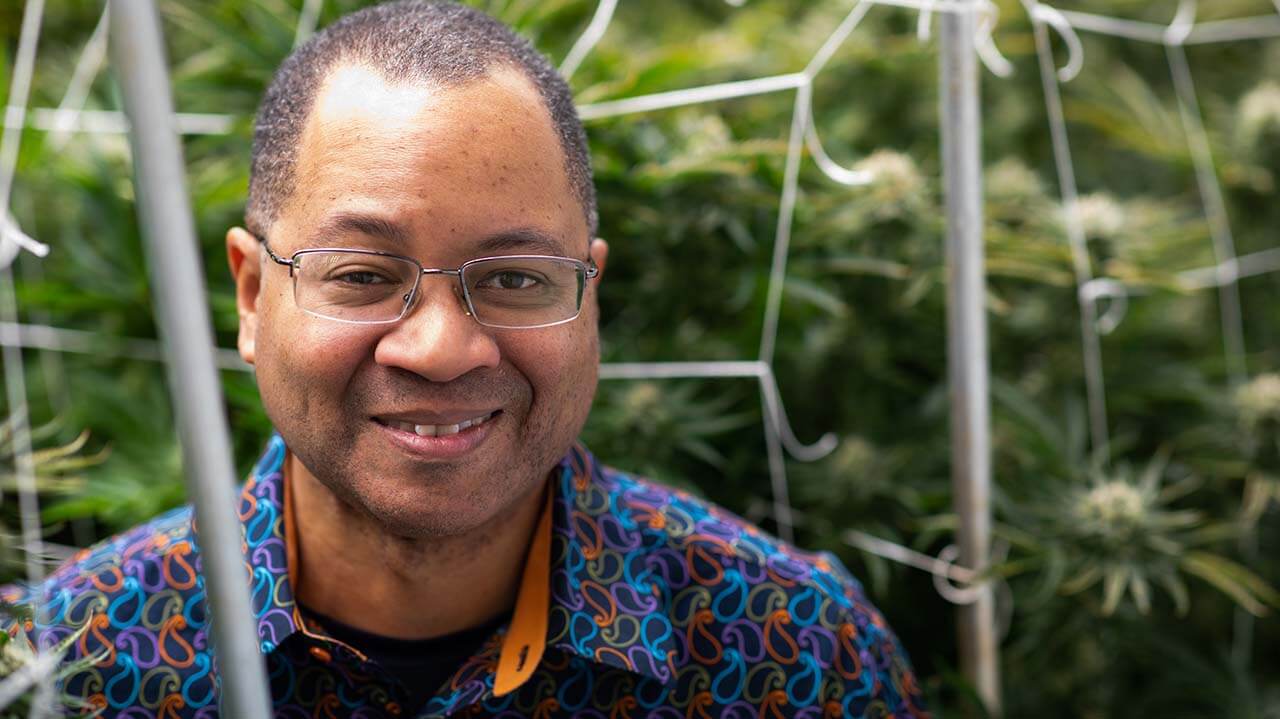(This story appears in the March issue of MJBizMagazine.)
As former general manager of three Arena Football League teams, Reggie Harris knows the importance of going on offense.
So, in 2021, when Harris and his team launched House of Kush, a Kansas City, Missouri-based company that sells cannabis-plant genetics via seedlings and licensing deals, he didn’t wait for clients to come find him.
“Primarily, we’re going out seeking them,” Harris said.
Today, House of Kush genetics are growing in six states – Arizona, California, Maryland, Michigan, Missouri and Oklahoma – and will be in three or four more states within the next six months, Harris said. The company also has entered a deal to sell its genetics to Colombia-based cannabis firm Clever Leaves.
House of Kush genetics already have garnered kudos. California-based Statehouse Holdings (formerly Harborside) won sixth place in the 2022 Emerald Cup’s Sungrown Greenhouse Flower category using House of Kush’s SFV OG strain.
House of Kush’s latest partnership is with SunMed Growers in Warwick, Maryland, one of the largest cultivators in the state. Harris reached out to SunMed CEO Jake Van Wingerden in late 2021, and flower grown by SunMed using House of Kush genetics started selling in Maryland dispensaries in January.
“We looked to see who’s the biggest and the best, who’s got the best reputation for growing, who’s got the volume capacity that we can grow with,” Harris said.
SunMed’s hybrid greenhouse is 250,000 square feet, and Statehouse Holdings says it has 230,000 square feet of greenhouse with the potential to add another 100,000 square feet.
Bringing Bubba to KC
House of Kush was born out of a partnership struck between Harris and co-founders Steve Gardner and Colorado-based cannabis breeder Matt Berger, who bred the original and beloved Bubba Kush strain in 1997.
Berger was seeking a company that would safeguard and propagate the Bubba Kush strain. He chose House of Kush and pointed the company to trusted breeders whose plants were truest to the original Bubba Kush genetics.
House of Kush obtained Bubba Kush plants from multiple breeders around the country – in some cases working with local breeders and, in other cases, bringing the seedlings back to Kansas City.
Harris said that under the 2018 Farm Bill, it is legal to transport cannabis seedlings across state lines if their THC content is below 0.3%, the legal maximum for plants to be considered hemp. However, it’s important to check individual state rules, as not all states allow cannabis seedlings with any measurable THC.
House of Kush didn’t simply propagate the Bubba Kush plants it had. Instead, the company crossbred them with other varieties.
“Even though it’s a great medicinal plant, it doesn’t have the THC production, (and) it’s a difficult beast to produce commercially,” Harris said, adding that the strain is used more for crossbreeding than for selling directly to consumers.
In addition to Bubba Kush, House of Kush is working with eight to 10 so-called legacy strains, Harris said.
After crossbreeding plants, House of Kush breeders conduct a phenotype hunt (pheno hunt), whereby they grow several versions of each strain, looking for valuable qualities such as aroma, trichome production, yield and resistance to pests and disease.
The phenotype that does the best in these categories becomes the “mother plant,” from which House of Kush gets clippings to propagate and supply to partner growers, including those in other states.
In Sunmed’s grow
Once House of Kush’s genetics were in SunMed’s Maryland greenhouse, the cultivation team grew plants from them and started a pheno hunt to determine which ones would become mother plants.
Characteristics SunMed looked for included bud structure, leaf-to-bud ratio, resin production and aroma.
“We’re also doing some preliminary THC testing. It’s got to be in the mid- to high 20s from a THC standpoint for it to be commercially viable, because that’s what the market wants,” SunMed’s Van Wingerden said.
“When we do our phenotype hunt, we’re running it right alongside our production plants because we want to see how those phenos and those new genetics work with our system,” Van Wingerden said. “A new genetic has to match what we’re already doing. It can’t need something different. That’s a big part of our selection criteria, specifically associated with growth habits. I can’t have a real small plant, but I also can’t have a monster. I need a medium grower because those medium-aggressive growers match our system.”
Once SunMed settles on a mother plant, it asexually propagates the strain with clone cuttings, Van Wingerden said.
“That process can go on indefinitely. Our mother plants here at SunMed usually have about a six-month cycle, where they get refreshed with daughters and granddaughters and great-granddaughters associated with that original phenotype hunt,” he said. “What we found – and most cannabis growers will attest to this – is that once you get down into generation No. 6 or 7 or 8, you have some genetic drift and degradation.”
Not the end of the line
Generation 8 of a mother plant’s cuttings doesn’t have to mean new genetics are needed.
SunMed and a small but growing number of cultivators are incorporating tissue culture to preserve genetics for future propagation. Tissue culture involves taking cells from a plant, placing them in a petri dish with grow medium and regenerating plant material that can be grown into new mother plants and plant stocks. (For details about tissue culture, see “Scaling New Heights” in the March 2019 issue of MJBizMagazine.)
“To get back to square one, you have to go through something called meristem tissue culture. We have that capacity, and we can refresh those genetics with meristem tissue culture and keep that genetic lineage alive,” Van Wingerden said. “This was a six- to nine-month process, and then that process resets the genetic back to square one.”
Omar Sacirbey is senior writer for MJBizMagazine. You can reach him at omar.sacirbey@mjbizdaily.com.





